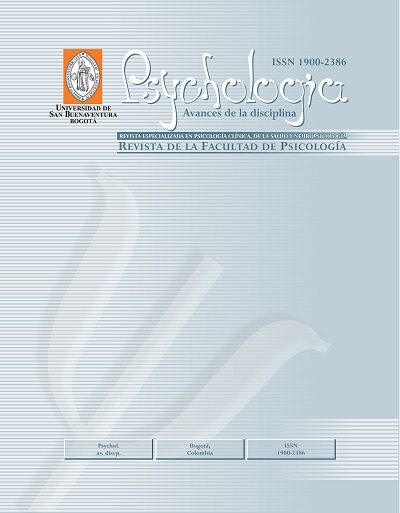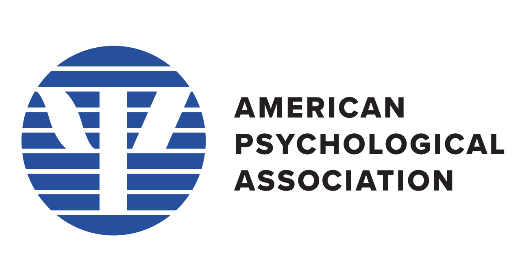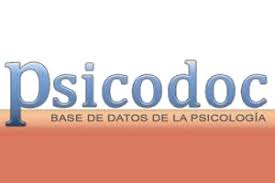This journal provides open, immediate access to its contents, based on the principle that offering the public free access to research helps to promote a higher global exchange of knowledge.
As such, all journal articles are published under a Creative Commons Attribution-NonCommercial-ShareAlike 4.0 International License (CC BY-NC-SA), by which commercial use of the original work or its possible derived works is not allowed, and the distribution thereof must be done with the same license elements regulating the original work.
http://creativecommons.org/licenses/by-nc-sa/4.0/
Abstract
Exclusive breastfeeding (EB) is a health behavior with a greatest health protective value for children and mothers. Self-efficacy is a predictor of different health behaviors. The objective of this research was to design and validate an
instrument to measure self-efficacy to breastfeed in pregnant women. An instrumental study was conducted with users of two primary health care centers, selected through a non-probabilistic sampling. Those women who were
illiterate or had a medical condition that contraindicated EB were excluded. Descriptive, bivariate and multivariate analysis were used to obtain the psychometric properties of the instrument. 369 women participated. An exploratory factorial analysis resulted in a 15 items unidimensional structure that explained 83% of the total variance of the scale (Cronbach’s alpha = .93). In addition, self-efficacy for breastfeeding was associated (p<.05) with intention to breastfeed, age and scholarship. The breastfeeding self-efficacy scale obtained showed adequate psychometric properties. So, it can be useful to identify women who may be at risk of not initiate breastfeeding from birth, as well as, it seems to be the first breastfeeding self-efficacy scale in Mexico.
References
Bandura, A. (1997). Self-efficacy: The exercise of control. New York: Freeman.
Bandura, A. (2001). Social cognitive theory: an agentic perspective. Annual Review of Psychology, 52(1), 1-26. doi:10.1146/annurev.psych.52.1.1
Chowdhury, R., Sinha, B., Sankar, M. J., Taneja, S., Bhandari, N., Rollins, N., ... & Martines, J. (2015). Breastfeeding and maternal health outcomes: a systematic review and meta‐analysis. Acta Paediatrica, 104(S467), 96-113. doi:10.1111/apa.13102
Conner, M., & Norman, P. (2005). Predicting health behaviour: Research and practice with social cognition models. Berkshire: Open University Press.
de Jager, E., Broadbent, J., Fuller-Tyszkiewicz, M., & Skouteris, H. (2014). The role of psychosocial factors in exclusive breastfeeding to six months postpartum. Midwifery, 30(6), 657-666. doi:10.1016/j.midw.2013.07.008
Dennis, C. L. (1999). Theoretical underpinnings of breastfeeding confidence: a self-efficacy framework. Journal of Human Lactation, 15 (3), 195-201. doi:10.1177/089033449901500303
Dennis, C.L. (2003). The breastfeeding self-efficacy scale: Psychometric assessment of the short form. Journal of Obstetric, Gynecologic, & Neonatal Nursing, 32(6), 734-744.
Dodgson, J. E., Henly, S. J., Duckett, L., & Tarrant, M. (2003). Theory of Planned Behavior-Based Models for Breastfeeding Duration Among Hong Kong Mothers. Nursing Research, 52(3), 148-158. doi:10.1097/00006199-200305000-00004
Glassman, M. E., McKearney, K., Saslaw, M., & Sirota, D. R. (2014). Impact of breastfeeding self-efficacy and sociocultural factors on early breastfeeding in an urban, predominantly Dominican community. Breastfeeding Medicine, 9(6), 301-307. doi:10.1089/bfm.2014.0015
Gregory, A., Penrose, K., Morrison, C., Dennis, C.-L., & MacArthur, C. (2008). Psychometric Properties of the Breastfeeding Self-Efficacy Scale- Short Form in an Ethnically Diverse U.K. Sample. Public Health Nursing, 25(3), 278-284. doi:10.1111/j.1525-1446.2008.00705.x
Espinoza-Cadima, C., Zamorano-Jiménez, C., & Graham-Pontones, S. (2014). Factores que determinan la duración de la lactancia materna durante los tres primeros meses de vida. Revista Anales Médicos, 59(2), 120-126.
Heinig, M. J. (2001). Host Defense Benefits of Breastfeeding for the Infant. Pediatric Clinics of North America, 48(1), 105-123. doi:10.1016/s0031-3955(05)70288-1
Henshaw, E. J., Fried, R., Siskind, E., Newhouse, L., & Cooper, M. (2015). Breastfeeding self-efficacy, mood, and breastfeeding outcomes among primiparous women. Journal of Human Lactation, 31(3), 511-518. doi:10.1177/0890334415579654
Horta, B. L., Loret de Mola, C., & Victora, C. G. (2015). Long‐term consequences of breastfeeding on cholesterol, obesity, systolic blood pressure and type 2 diabetes: a systematic review and meta‐analysis. Acta Paediatrica, 104(S467), 30-37. doi:10.1111/apa.13133
Horta, B. L., & Victora, C. G. (2013). Long-term effects of breastfeeding-a systematic review.
Instituto Nacional de Salud Pública y UNICEF México. (2016). Encuesta Nacional de Niños, Niñas y Mujeres, 2015- Encuesta de Indicadores Múltiples por Conglomerados 2015, Informe Final. Ciudad de México: Instituto Nacional de Salud Pública y UNICEF México.
Ip, S., Chung, M., Raman, G., Chew, P., Magula, N., Trikalinos, T., & Lau, J. (2007). Breastfeeding and maternal and infant health outcomes in developed countries. Evid Technol Asses (Full Rep), 153(153), 1-186.
Isaacs, C. E. (2005). Human Milk Inactivates Pathogens Individually, Additively, and Synergistically. The Journal of Nutrition, 135(5), 1286-1288. doi:10.1093/jn/135.5.1286
Labbok, M. H. (2013). Breastfeeding: Population-Based Perspectives. Pediatric Clinics of North America, 60(1), 11-30. doi:10.1016/j.pcl.2012.09.011
Lodge, C. J., Tan, D. J., Lau, M. X. Z., Dai, X., Tham, R., Lowe, A. J., ... & Dharmage, S. C. (2015). Breastfeeding and asthma and allergies: a systematic review and meta‐analysis. Acta Paediatrica, 104(S467), 38-53. doi:10.1111/apa.13132
Lodge, C. J., Bowatte, G., Matheson, M. C., & Dharmage, S. C. (2016). The role of breastfeeding in childhood otitis media. Current Allergy and Asthma Reports, 16(9), 68. doi:10.1007/s11882-016-0647-0
Loke, A. Y., & Chan, L. K. S. (2013). Maternal Breastfeeding Self‐Efficacy and the Breastfeeding Behaviors of Newborns in the Practice of Exclusive Breastfeeding. Journal of Obstetric, Gynecologic, & Neonatal Nursing, 42(6), 672-684. doi:10.1111/1552-6909.12250
Mårild, S., Hansson, S., Jodal, U., Odén, A., & Svedberg, K. (2007). Protective effect of breastfeeding against urinary tract infection. Acta Paediatrica, 93(2), 164-167. doi:10.1111/j.1651-2227.2004.tb00699.x
McCarter-Spaulding, D. E., & Dennis, C.-L. (2010). Psychometric testing of the breastfeeding self-efficacy scale-short form in a sample of Black women in the United States. Research in Nursing & Health, 33(2), 111-119. doi:10.1002/nur.20368
McQueen, K., Sieswerda, L. E., Montelpare, W., & Dennis, C. L. (2015). Prevalence and Factors Affecting Breastfeeding Among Aboriginal Women in Northwestern Ontario. Journal of Obstetric, Gynecologic & Neonatal Nursing, 44(1), 51-68. doi:10.1111/1552-6909.12526
Meedya, S., Fahy, K., & Kable, A. (2010). Factors that positively influence breastfeeding duration to 6 months: A literature review. Women and Birth, 23(4), 135-145. doi:10.1016/j.wombi.2010.02.002
Meneses, J., Barrios, M., Lozano, L. M., Bonillo, A., Turbany, J., Cosculluela, A., & Valer, S. (2013). Psicometría. Barcelona: Editorial UOC.
Moss, B. G., & Yeaton, W. H. (2014). Early childhood healthy and obese weight status: potentially protective benefits of breastfeeding and delaying solid foods. Maternal and Child Health Journal, 18(5), 1224-1232. doi:10.1007/s10995-013-1357-z
Oliver-Roig, A., d’Anglade-González, M. L., García-García, B., Silva-Tubio, J. R., Richart-Martínez, M., & Dennis, C. L. (2012). The Spanish version of the breastfeeding self-efficacy scale-short form: reliability and validity assessment. International Journal of Nursing Studies, 49(2), 169-173. doi:10.1016/j.ijnurstu.2011.08.005
OPS-OMS. (2014). Lactancia materna: un tema contemporáneo en un mundo globalizado. Recuperado de: www.paho.org
Rodríguez-García, J., & Acosta-Ramírez, N. (2008). Factores Asociados a la Lactancia Materna Exclusiva en Población Pobre de Áreas Urbanas de Colombia. Revista de Salud Pública, 10(1), 71-84. doi:10.1590/s0124-00642008000100007.
Sankar, M. J., Sinha, B., Chowdhury, R., Bhandari, N., Taneja, S., Martines, J., & Bahl, R. (2015). Optimal breastfeeding practices and infant and child mortality: a systematic review and meta‐analysis. Acta Paediatrica, 104(S467), 3-13. Doi:10.1111/apa.13147
StataCorp. (2015). Stata Statistical Software: Release 14. College Station, TX: StataCorp LP.
World Health Organization. (2011). Exclusive breastfeeding for six months best for babies everywhere. Recuperado de: http://www.who.int/mediacentre/news/statements/2011/breastfeeding_20110115/en/
Wutke, K., & Dennis, C.-L. (2007). The reliability and validity of the Polish version of the Breastfeeding Self-Efficacy Scale-Short Form: Translation and psychometric assessment. International Journal of Nursing Studies, 44(8), 1439-1446. doi:10.1016/j.ijnurstu.2006.08.001
Zubaran, C., Foresti, K., Schumacher, M., Thorell, M. R., Amoretti, A., Müller, L., & Dennis, C. L. (2010). The Portuguese Version of the Breastfeeding Self-Efficacy Scale—Short Form. Journal of Human Lactation, 26(3), 297-303. doi:10.1177/0890334409359916





















